Saba Misoni is a classic Japanese home-cooked dish where mackerel fillets are simmered in miso sauce with ginger. Tender and flavorful, it goes beautifully with steamed rice!
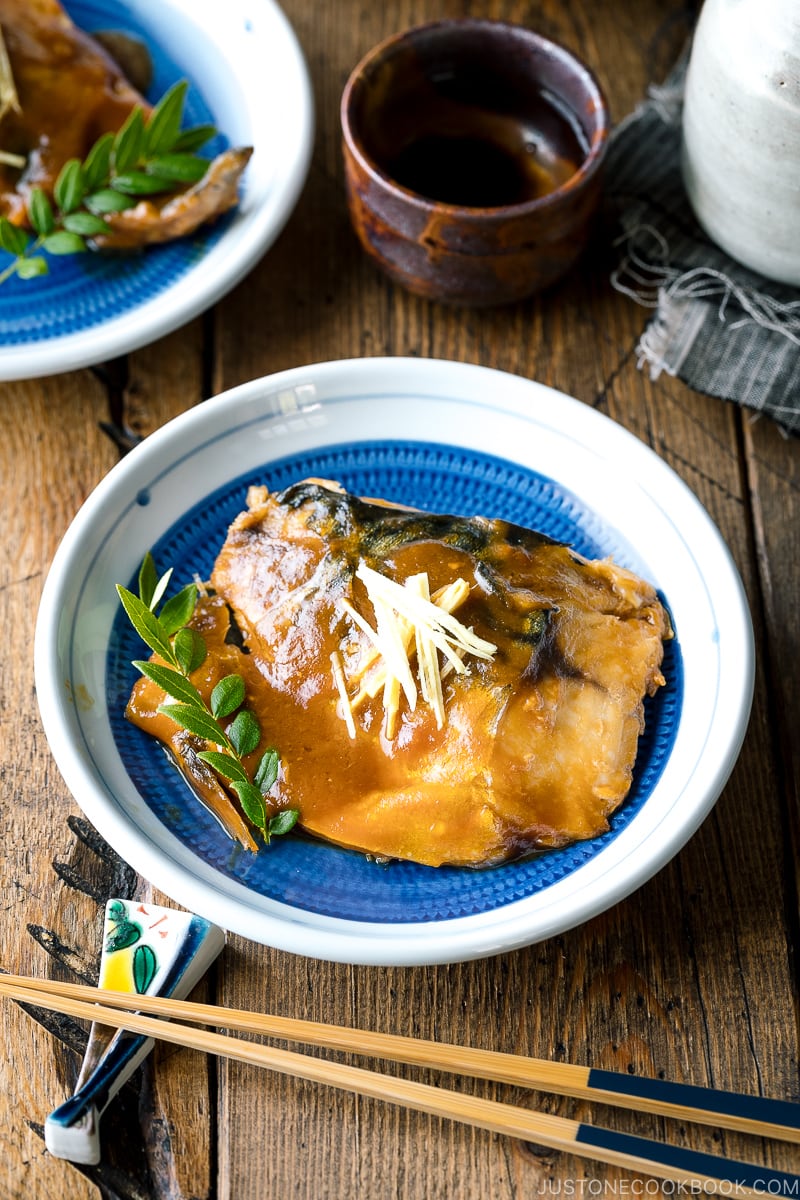
Like many Japanese of my generation, I cannot go a week without a proper Japanese-style meal. A simple yet decent fish dish is a must on the menu. This Saba Misoni (鯖の味噌煮), basically mackerel simmered in miso, is a dish that never fails to satisfy my cravings. Let me show you how to make it with my easy recipe.
Table of Contents
What is Saba Misoni?
Saba (鯖) means mackerel in Japanese. Misoni (味噌煮) or miso-ni is a cooking style where an ingredient is simmered in a miso-based sauce. This traditional dish is popular in Japanese home cooking as a good source of protein and for its savory flavors and easy preparation.
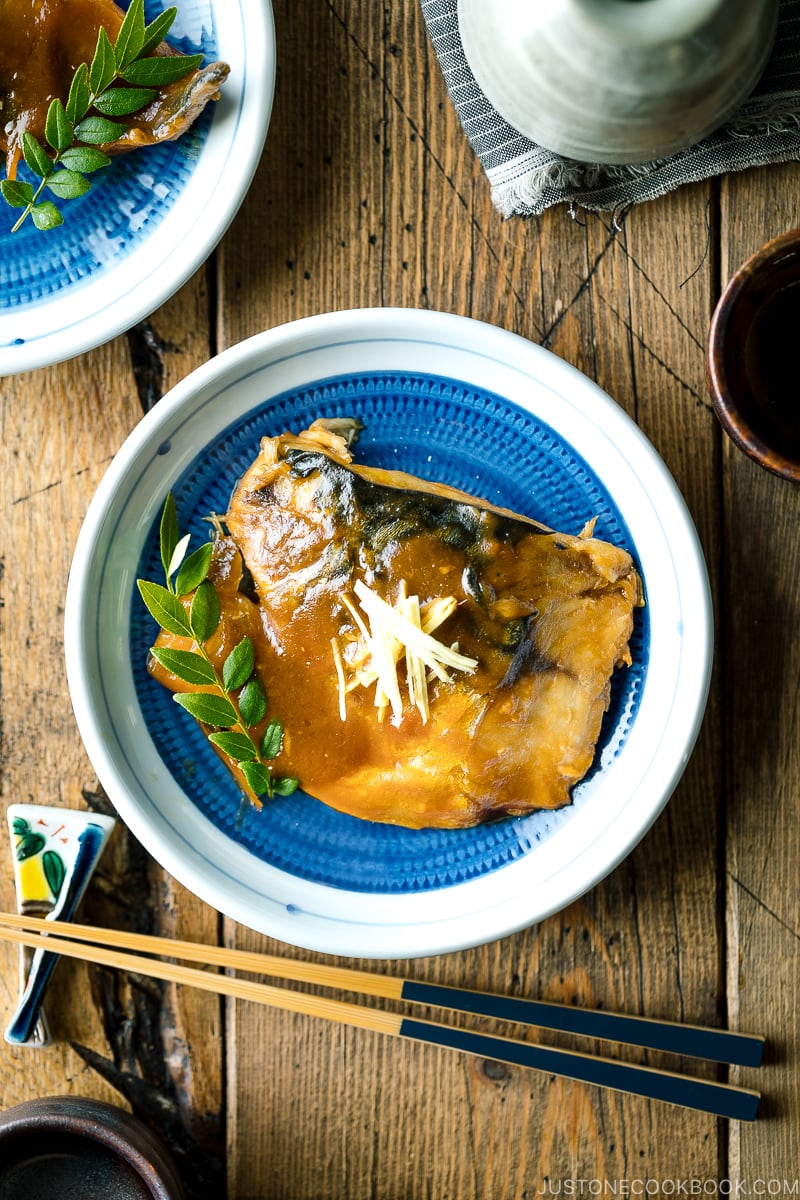
Because of the stronger flavor, blue-backed fish (青身魚) typically goes well with miso-based sauce. This type of fish includes mackerel, horse mackerel, sardine, and Pacific saury (sanma). Also, any oily fish or fish scraps like tuna scraps are good with miso-based sauce.
On the other hand, white-fleshed fish such as sea bream, yellowtail, sablefish, flatfish, or splendid alfonsino are suited to soy-based sauce.
Ingredients You’ll Need
- mackerel (saba) fillets
- ginger
- Japanese condiments – sake, mirin, miso, soy sauce, and sugar
How To Make Saba Misoni
- Blanch the mackerel. I’ll tell you more about this in the next section.
- Cook the mackerel in the miso sauce.
- Let cool and reheat to serve.
5 Tips on Making Saba Misoni
1. Blanch the mackerel first.
It’s important to clean the impurities (like blood) and remove any fishy odor and sliminess. This process is called shimofuri (霜降り) in Japanese, and it’s a common technique for preparing fish. The ice bath also firms up the flesh to help retain the flavor. Even with this extra step, the prep time for this dish is just 10 minutes.
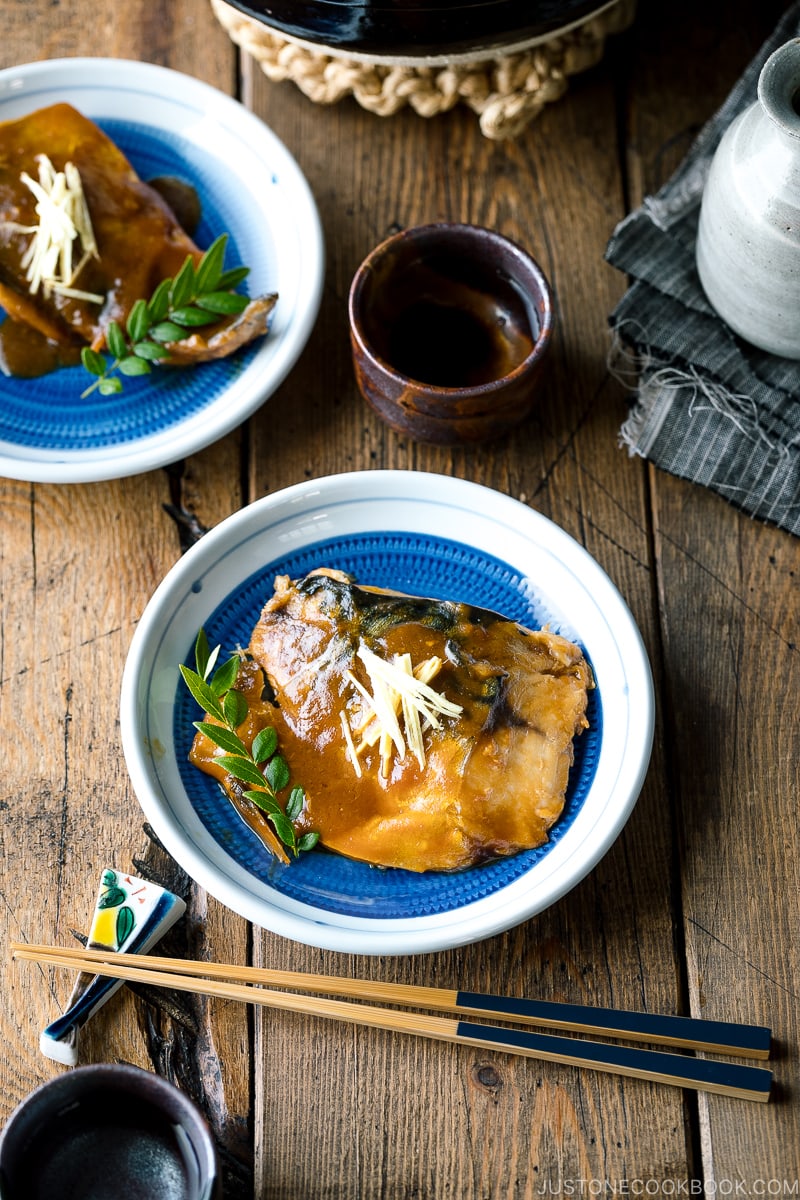
2. Don’t skip the sake.
Sake not only removes the odor while evaporating alcohol, but it is also known to make the flesh of the fish plump, juicy, and tender.
3. Add the miso in 2 steps.
Miso loses its flavor when it’s cooked for a long time; therefore, add the second half of the miso mixture after simmering.
4. Tilt the pot to distribute the sauce.
When you add the miso for the second time along with soy sauce, the best way to mix all together is to gently tilt the pot around to distribute the sauce, instead of mixing with a ladle or utensil. That’s because Japanese simmered dishes are typically cooked with very little sauce with an otoshibuta (drop lid) on top.
If you are new to this Japanese cooking tool, read my otoshibuta blog post where you can learn more about what it is, why we use it, where to buy, and how to make your own.
5. Let cool for 30 minutes.
Simmered foods taste the best when they are cooled and reheated. While cooling down, the ingredients absorb all the delicious savory flavors. I like to prepare the other dishes for the meal during this resting period. Even with this inactive cooling time, this dish takes a total time of just one hour.

What to Serve With Saba Misoni
This homestyle, rich-tasting mackerel could be the main star of your Ichiju Sansai traditional Japanese meal, but it’s also delicious with steamed rice alone. Any small side dishes such as pickles, soups, and salads make a welcome accompaniment. Here are some of my favorite sides that I like to serve to round out the meal:
- Vegetable Miso Soup
- Miso Soup with Yuzu Kosho
- Gobo Salad (Burdock Root Salad)
- Cucumber Salad
- Tomato Myoga Salad
- Japanese Pickled Cabbage or Pickled Daikon
Other Delicious Fish Recipes on Just One Cookbook
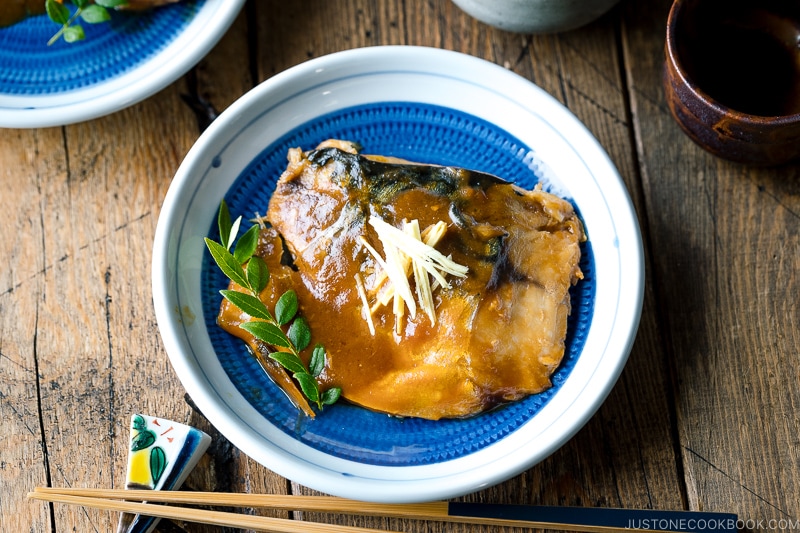
Wish to learn more about Japanese cooking? Sign up for our free newsletter to receive cooking tips & recipe updates! And stay in touch with me on Facebook, Pinterest, YouTube, and Instagram.
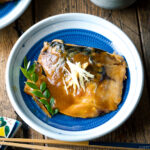
Saba Misoni (Mackerel Simmered in Miso)
Video
Ingredients
- 2 fillets mackerel (saba) (13 oz, 374 g; 2 fillets from 1 mackerel; see the picture below)
For the Seasoning #1
Instructions
- Before You Start…Please note that this recipe requires 30 minutes of resting time. Gather all the ingredients.
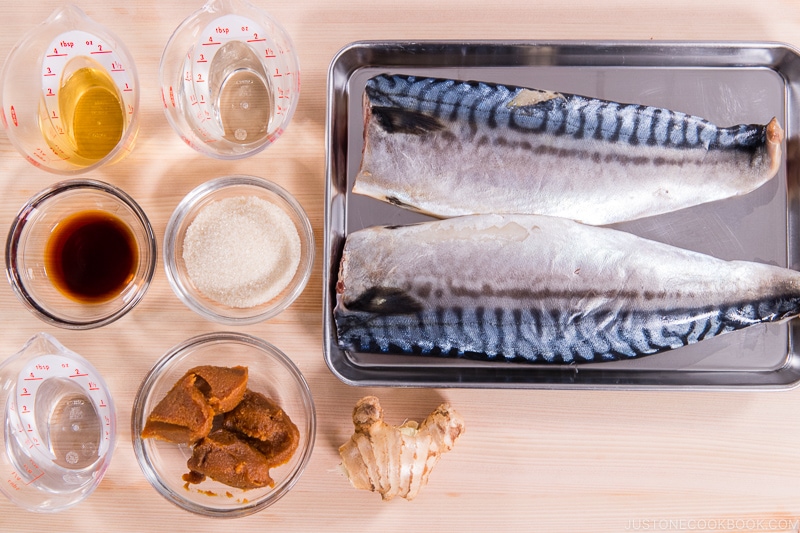
To Prepare the Ingredients
- Scrape off the skin from 1 knob ginger with a knife (or a spoon) and cut into thin slices. Keep half the slices for cooking the fish and use the other half for the next step.
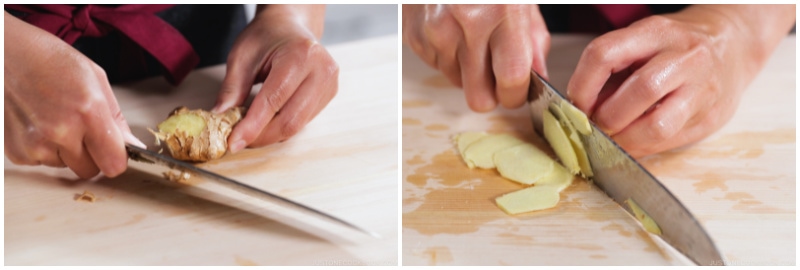
- Cut the other ginger slices into thin julienned strips and transfer to a plate. This is for garnish.
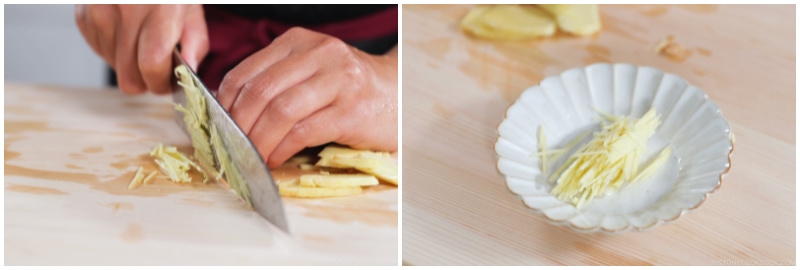
- Cut each of the 2 fillets mackerel (saba) in half, in a slanted angle (this creates more surface to absorb flavors). Make a shallow cross incision on the skin side of the thickest part of the fillets.
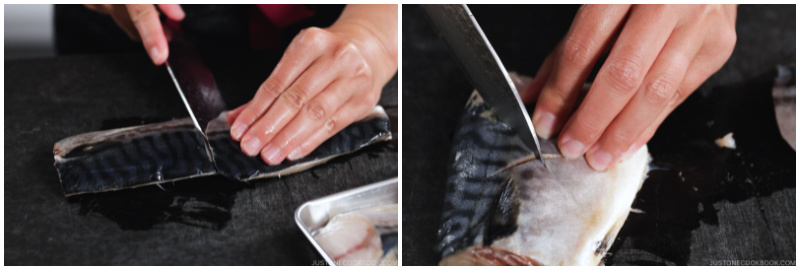
To Blanch the Fish
- Bring a medium pot of water to a boil. Once boiling, gently add a fillet, one at a time, for a quick blanch to remove the sliminess, smell, and impurities. Scoop up the fish with a fine-mesh strainer or a slotted spoon. Alternatively, you can pour boiling water over the fillets.
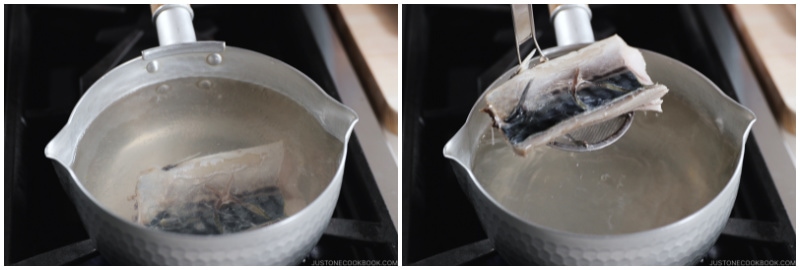
- Quickly shock the fish in the ice bath. And repeat this blanch/ice bath process with the rest of the fillets.
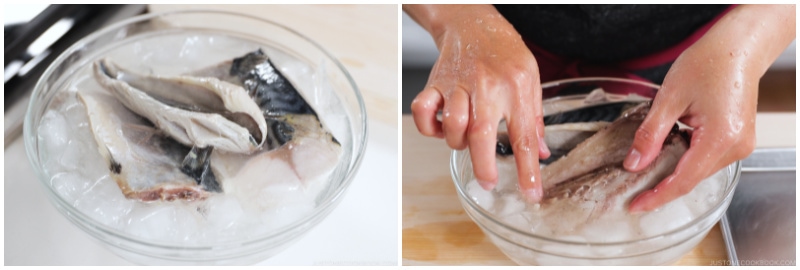
- Clean the fish in the ice water, removing blood or any impurities. The ice water helps firming up the flesh of the fish as well. Once clean, transfer to a plate/tray and set aside.
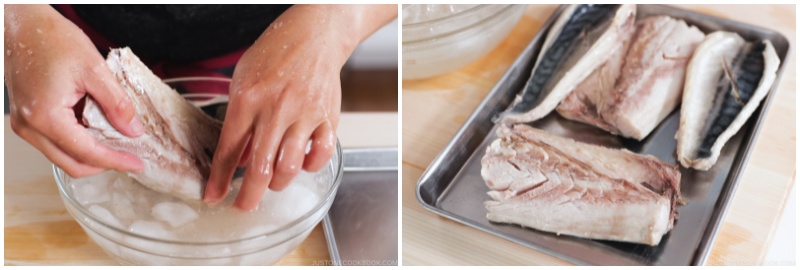
To Cook the Fish
- In a medium/large saucepan, add the Seasoning #1—4 Tbsp water, 4 Tbsp sake, 2 Tbsp mirin, 2 Tbsp sugar, 2 Tbsp miso (keep the other 2 Tbsp miso for later), and 1 knob gingerhe ginger slices.
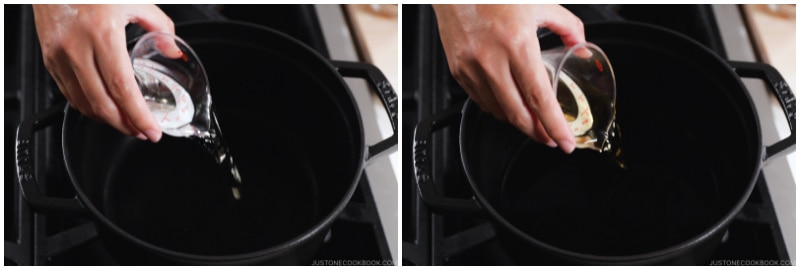
- Turn the heat to medium and bring the sauce to a boil while mixing the ingredients.
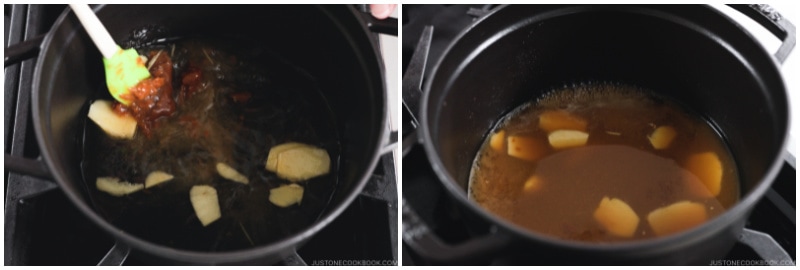
- When boiling, place mackerel in a single layer, skin side up.
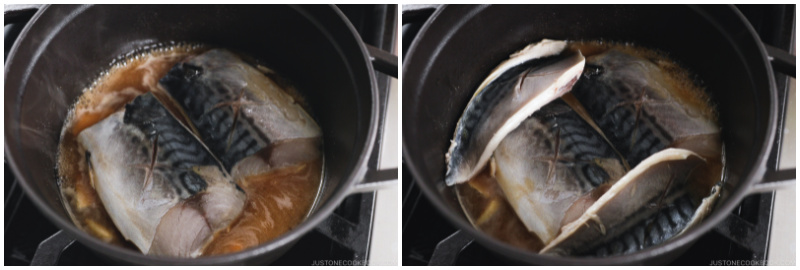
- Reduce heat to medium-low and put an otoshibuta (drop lid). Gently simmer for 13–15 minutes. Otoshibuta keeps the fish down and helps the sauce circulate over the fish.
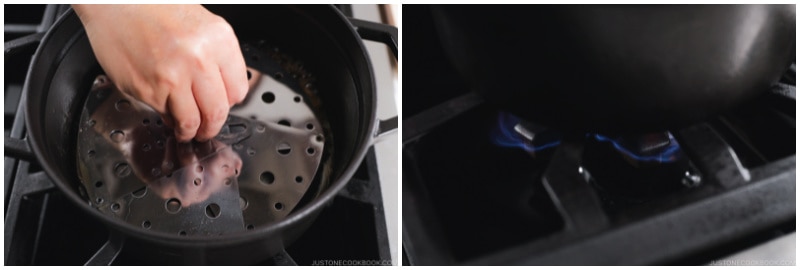
- Remove the otoshibuta (drop lid). Using the fine-mesh skimmer or slotted spoon, gently take one fillet out to a plate.
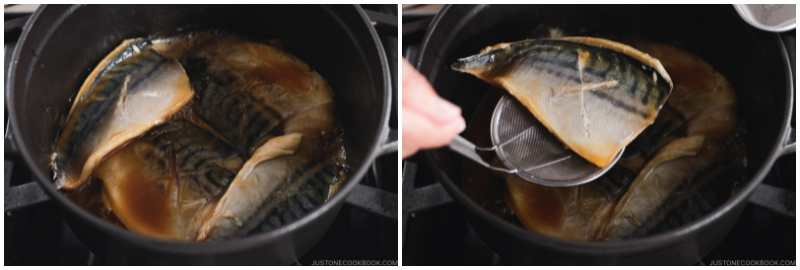
- Now we add the Seasoning #2. Add 2 Tbsp miso and let it dissolved completely.
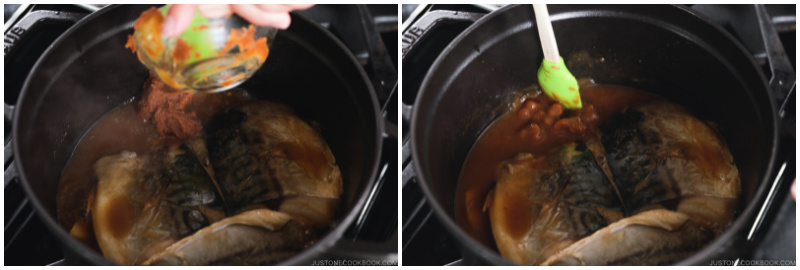
- Put the fillet back in the sauce and drizzle 1 tsp soy sauce.
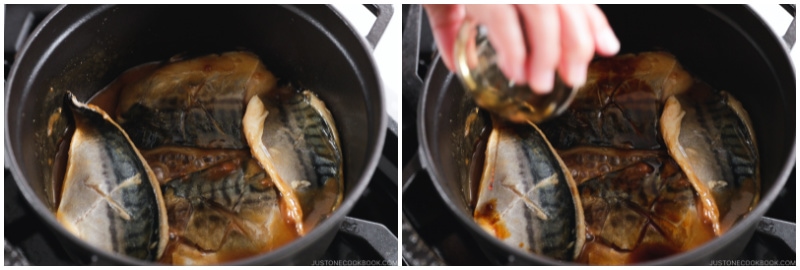
- Hold the pot and tilt it around to distribute/mix the sauce with the fish (we use a very little amount of the sauce, so this is the best way to distribute and mix the sauce at the same time). Spoon the sauce over the fish a few times.
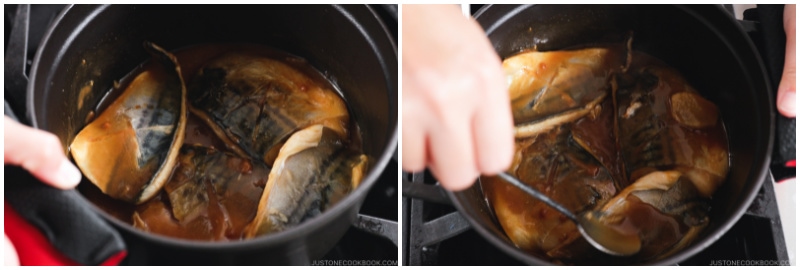
- Turn off the heat and cover with the lid. Let the fish cool for 30 minutes. All Japanese simmered foods apply this “let cool“ step so the ingredients can absorb the flavors without overcooking them.
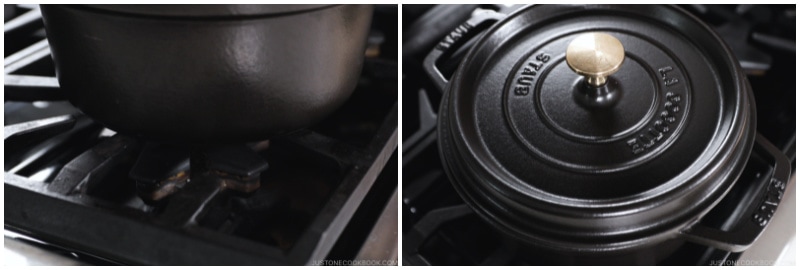
To Reheat and Serve
- Uncovered and turn the heat to medium. Reheat the fish, but make sure to stay around the kitchen so you don‘t burn the thickened miso sauce. Spoon the sauce over the fish a few times.
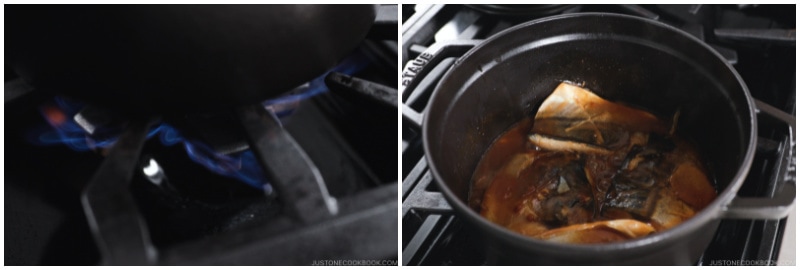
- Transfer the fish and drizzle the sauce.
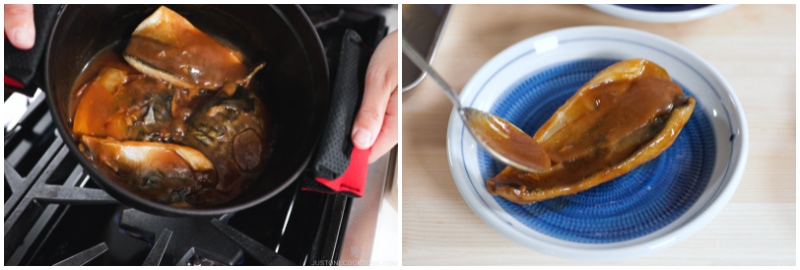
- Garnish with julienned ginger strips and optional kinome leaf.
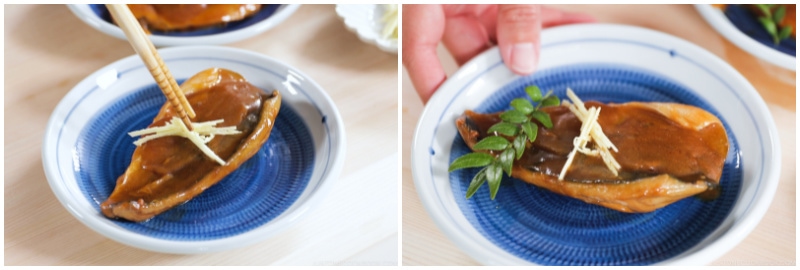
To Store
- You can keep the leftovers in an airtight container and store in the refrigerator for up to 2 days.
Nutrition
Editor’s Note: This post was originally published on June 8, 2011. The images, the blog content, and the recipe have been updated in June 2021. The video is also added in June 2021.
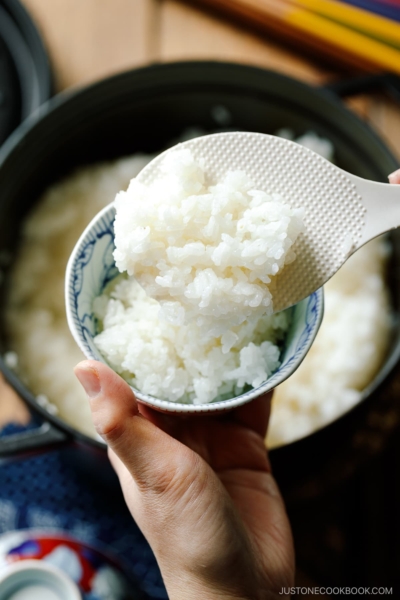
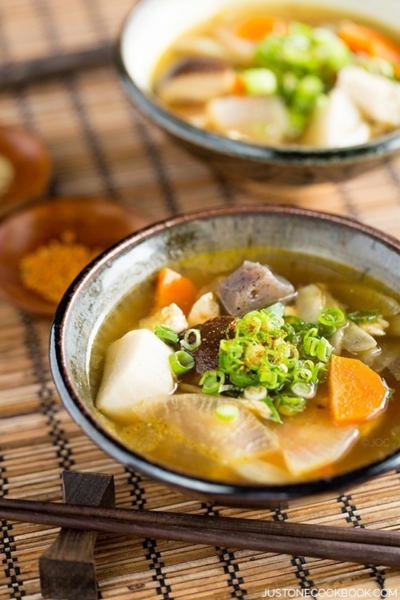
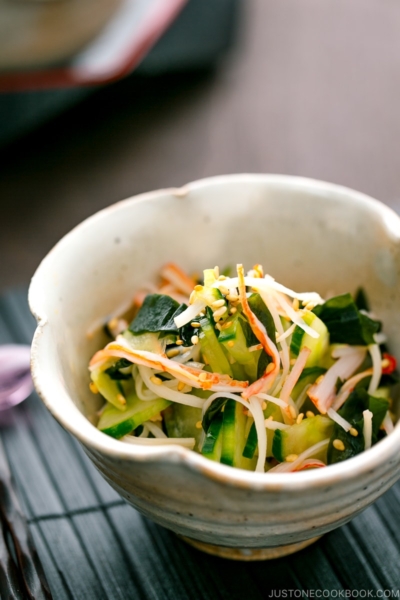
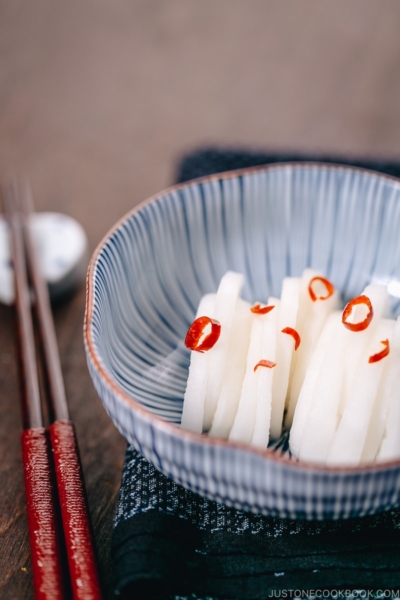




Is there a fish you would reccomend as an alternative to mackerel? This sounds delicious but it’s a little hard to find mackerel fillets where I live (frozen whole mackerel is available but not common). Or maybe a way to make it with whole mackerel?
Hello, Mika. Thank you for trying Nami’s recipe.
The fish flavor will be different, but white fish like tilapia may pair well with this miso sauce. Please let us know how it goes!
I tried this the other night – personally, I would have used less Miso, but I certainly wasn’t disappointed!
Hi, Emily! Thank you for trying Nami’s recipe and for your feedback!
Wow! So delicate and yet full of flavour… pure umami 💕 thanks Nami for another super recipe!
Hello Alessandra! We are happy to hear you enjoyed this dish!
Thank you for trying Nami’s recipe and for your kind feedback! 🤗
Hello does this work with frozen salted mackerel? Or would the salt content be too high to be tasty?
Hi, Lauren! Thank you for reading Nami’s post.
If it’s salted mackerel, it’ll probably turn really salty.
Can I use canned mackarel?
Hello, Andrea! We haven’t tried this recipe with canned mackerel, but the sauce should complement it nicely. The cooking time may need to be adjusted after adding the fish.
Please let us know how it goes if you give it a try!
I tried it for the first time last night. I was too lazy and hungry, so I skipped adding a second miso, just put everything in, closed the lid, let it sit for a while, and then drizzled some soy sauce. It tastes amazing! Taste like in the restaurant. I just started cooking a month ago and always follow a recipe from Just One Cookbook because I love Japanese food and the recipe here is very detailed. And content includes some background stories about the dish which I always enjoy reading. Thank you so much!
Hi Wendy! We are glad to hear you enjoyed the dish.
Thank you so much for the compliment.☺️ We hope you continue to enjoy cooking with us. Happy Cooking!
Hello! I love all the JOC recipes I’ve tried, thank you for always posting such great meals! I’ve recently moved to a London suburb where I don’t have access to a good fishmonger, alas! Would this work with canned mackerel (in spring water)? Best wishes, Jenny
Hi Jenny! Thank you so much for your kind words about Nami’s recipes. We are so happy to hear that you enjoyed many of them.🥰
We haven’t tried this recipe with canned mackerel, but the sauce should go well with it. After you add the fish, the cooking time may need to be reduced.
We hope this helps!
It looks delicious and I certainly want to try it to maybe include it into my 一汁三菜 routine.
Honestly, I have a practical question, though. The filet pieces are quite large, certainly not bite-sized. How do you properly eat them? Is it accecptible to pick them up with the chopsticks, take a bite and put them down again? Do I rather need to break it appart with the sticks on the plate and only pick up smaller pieces?
What’s the appropriate/correct way to eat it?
Hi ミハエル! Thank you very much for trying Nami’s recipe and for your kind feedback!
The proper way to eat fish is to first break it apart on the plate with chopsticks (use only one hand – don’t use both hands and break the fish) and then eat.
Other posts about Japanese dining etiquette can be found at:
https://www.justonecookbook.com/japanese-dining-etiquette/
https://www.justonecookbook.com/japanese-dining-etiquette-guide/
We hope this helps! 🙂
Which red miso do you recommend for Saba Misoni? The Hikari organic red miso has koji grain, the texture is not as refined as what I see in your photos.
Hi Ed! Thank you very much for trying Nami’s recipe!
Nami used Hikari Organic red miso but it didn’t have much grain texture.